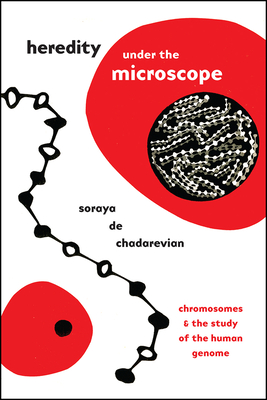

 University of Chicago Press
University of Chicago Press
Heredity under the Microscope: Chromosomes and the Study of the Human Genome


Key Metrics
- Soraya De Chadarevian
- University of Chicago Press
- Hardcover
- 9780226685083
- 9.02 X 5.98 X 0.75 inches
- 1.31 pounds
- Science > History
- English
 Secure Transaction
Secure TransactionBook Description
Telling this history in full for the first time, Soraya de Chadarevian argues that the often bewildering variety of observations made under the microscope were central to the study of human genetics. Making space for microscope-based practices alongside molecular approaches, de Chadarevian analyzes the close connections between genetics and an array of scientific, medical, ethical, legal, and policy concerns in the atomic age. By exploring the visual evidence provided by chromosome research in the context of postwar biology and medicine, Heredity under the Microscope sheds new light on the cultural history of the human genome.
Author Bio
Soraya de Chadarevian is Professor in the Department of History and the Institute for Society and Genetics. She is a historian of science, technology and medicine with background in biology and philosophy. Her main area of interest are the life sciences in the twentieth and twenty-first century. Her research has been supported by numerous grants, including most recently by a scholar award from the National Science Foundation (2015-2021).
She has held fellowships and visiting appointments at the Walther Rathenau Program and the Max Planck Institute for History of Science in Berlin; at La Villette and the École des Hautes Études en Sciences Sociales in Paris; at the Hamburg Institute for Social Research; at Churchill College Cambridge and at the Institute for Advances Studies in the Humanities at the University of Edinburgh. Before joining the faculty at UCLA, she was a senior research associate and affiliated lecturer in the Department of History and Philosophy of Science at the University of Cambridge (1991-2006) where she keeps the status of an affiliated scholar.
She is interested in the material and visual practices in the life sciences and the place of these sciences in the broader culture as well as in historiographical issues. She has worked extensively on the history of molecular biology and the complex scientific, institutional, political and cultural processes that contributed to the development of the new science with its broad implications for our understanding of the production and reproduction of life.
Her publications on this topic include the monograph Designs for Life: Molecular Biology after World War II (Cambridge 2002; paperback 2011); the exhibition catalogue Representations of the Double Helix (Whipple Museum 2002); the co-edited volume Molecularizing Biology and Medicine: New Strategies and Alliances, 1910s-1970s (Harwood 1998); three co-edited journal issues as well as numerous articles and book chapters. Other publications include the co-edited volume Models: The Third Dimension of Science (Stanford 2004) and a book on the philosophy of the French phenomenologist Maurice Merleau-Pont (Zwischen den Diskursen, 1990).
More recently, she has published on the use of genetic evidence in history, on questions of the archives, on genetic studies of human populations, and on histories of data and the database.
Her most recent monograph Heredity under the Microscope: Chromosomes and the Study of the Human Genome (Chicago 2020) is a study of the postwar history of human heredity, told from the vantage point of chromosomes. Today chromosomes are understood as macromolecular assemblies and are analyzed with a variety of molecular techniques. Yet for much of the twentieth century, researchers studied chromosomes looking down the microscope.
Making space for microscope-based next to molecular approaches to human heredity, the book investigates the many fields – from radiobiology and toxicology to cancer research, clinical diagnosis, gender testing, criminology and the study of human populations – where genetic explanations where taken up or resisted. By following chromosomes and the images that traveled with them, the book sheds new light on how genetic evidence gained prominence in the atomic age and beyond.
She teaches courses on genetics and society and on science as a way of knowing at ISG as well as introductory and advanced history of science, technology and medicine courses for undergraduate and graduate students in the Department of History.
Source: UCLA Institute for Society and Genetics
Videos
No Videos
Community reviews
Write a ReviewNo Community reviews